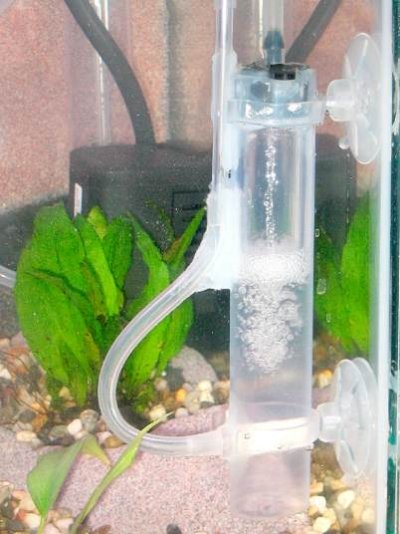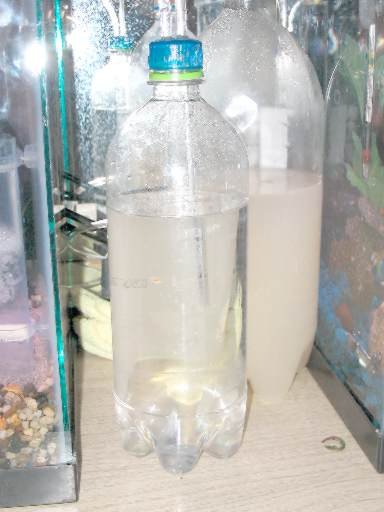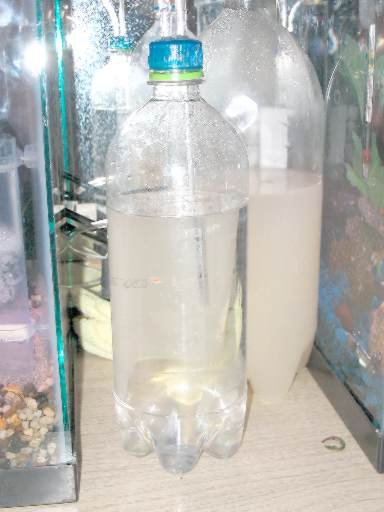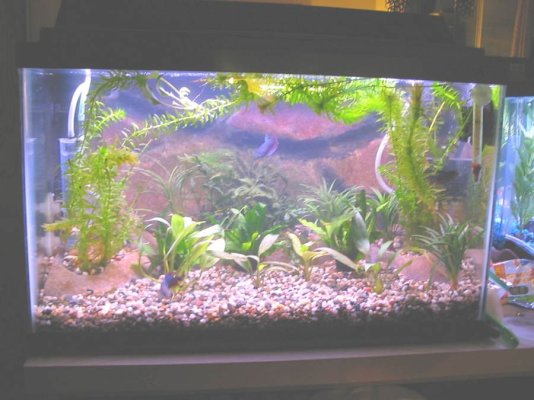Here's what I find works best.
As you can see in the picture, the tube is pointing straight out from the powerhead outflow, what I have recently done is add a 90 degree elbow adaptor to the set up, this now causes the water to shoot downwards. I find this churns up the bubbles better, since they are going up and the water forces them down. Furthermore, at the end of the tube I have replaced the foam insert (shown in the picture) with a piece of mesh (any fine mesh will do, secure it with a zip tie around the outside of the tube, since I found the foam got really clogged with bateria after a while. One other thing which will help is to make sure that the tube (ie the siphon tube) you are using is long enough. Mine is only about five inches, therefor some of the bubble escape out the bottom, a longer one would solve this problem.
The recipe I use, with much success, is as follows:
Get a two litre coke bottle, add to this...
Two cups of really hot water, use a kettle for this.
Add to the water two cups of sugar, now shake vigourously till all the sugar is disolved.
Add to more cups of cool water, two tablespoons of yeast and two tablespoons of baking soda, in this order. If the water's to hot it'll kill the yeast.
Finally add two more cups of cold water to the bottle. Shake the bottle up good and plenty.
Now connect you air hose from the bottle to the hole in the tube of the reactor like in the picture.
Things to note:
Make sure you've got an overflow bottle (ie two two litre bottles), I assuming you can figure out how to hook them up so you have only one hose going to the tube in the tank.
Also, this mix last approx. two weeks for me. You'll notice that the gas starts coming out less and less as you get close to the two week period.
Also, after introducing C02 into your tank you'll notice that the
ph of your tank will drop, reason being C02 and water produce (I think it's called) Carbon Acid, hense the drop in
ph or high acidity level. Get a
kh test kit, then look on the net and you should be able to find a
ph and
kh chart that tells you the C02 level in your tank.
One thing that I have not done and you might want to consider is putting some sort of valve in the line going to the C02 reactor, much like people do when using airstones. This way you'll have a bit of control over the amount of gas going into the tank.
Hope this gives you some ideas.






